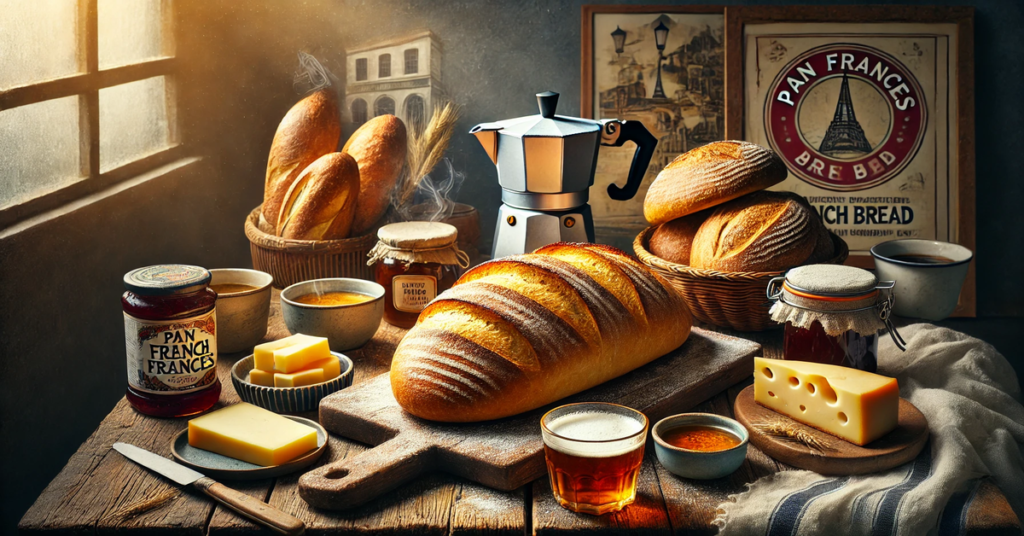Pan francés, often referred to as “French bread,” holds a cherished place in global cuisine. Renowned for its crisp crust and soft, airy interior, this bread has transcended its origins to become a staple in households, bakeries, and restaurants worldwide. Whether enjoyed with a cup of coffee, used as a vessel for sandwiches, or paired with soups, pan frances continues to captivate taste buds and connect people across cultures.
This article delves into the history, preparation, variations, cultural significance, and nutritional aspects of pan francés, illustrating why it remains a beloved choice among bread enthusiasts.
The History of Pan Francés
Origins in France
Pan francés traces its origins to France, where bread-making is considered an art form. The term “pan francés” specifically refers to styles of bread inspired by the iconic baguette, which emerged in France during the 18th century. The baguette became widely popular in the 1920s when laws were enacted to prevent bakers from working at night, necessitating the creation of bread that could be baked quickly.
The French have long considered bread a cornerstone of their culinary heritage. With the rise of French influence globally, the baguette and its variations like pan francés were introduced to other parts of the world, including Latin America, where it gained immense popularity.
Pan Francés in Latin America
In Latin America, pan francés took on a unique identity, blending French techniques with local ingredients and traditions. Countries like Mexico, El Salvador, and Guatemala embraced pan frances, adapting it to suit their culinary preferences. It became an essential component of daily meals, particularly for breakfast and dinner.
Preparation of Pan Francés
Key Ingredients
Traditional pan frances relies on a few simple ingredients:
- Flour: High-quality wheat flour forms the base of the dough.
- Water: Essential for hydration and dough consistency.
- Yeast: Provides leavening, giving the bread its airy structure.
- Salt: Enhances flavor and regulates yeast activity.
The Baking Process
- Mixing and Kneading: The ingredients are combined and kneaded until the dough achieves a smooth, elastic texture.
- Fermentation: The dough is left to rise, allowing the yeast to ferment and create air pockets.
- Shaping: The dough is shaped into long, slender loaves or small rolls, depending on the desired style.
- Proofing: After shaping, the dough undergoes a second rise to develop flavor and texture.
- Baking: The loaves are baked in a hot oven, often with steam, to create the signature crispy crust.
Variations of Pan Francés
Baguette
The classic French baguette is perhaps the most famous variation. Characterized by its long, narrow shape and golden crust, it’s a staple in French bakeries and beyond.
Bolillo
In Mexico, pan francés is commonly known as the “bolillo.” This variation is shorter and rounder than the baguette, often used for sandwiches like tortas.
Pan de Agua
Popular in the Caribbean, “pan de agua” (water bread) is a soft and slightly sweet version of pan frances.
Pan Sobado
In El Salvador and Honduras, pan sobado is a denser, slightly sweet variation of pan francés, enjoyed with coffee or cheese.
Cultural Significance
Daily Life
In many cultures, pan francés is a symbol of simplicity and sustenance. It’s often purchased fresh daily from local bakeries, forming an integral part of meals.
Festive Occasions
Pan francés plays a role in celebrations and holidays. For example, it’s paired with chocolate or other sweet spreads during festivals.
Economic Impact
Bakeries producing pan francés contribute to local economies, providing jobs and fostering a sense of community.
Nutritional Aspects
Macronutrients
Pan francés is primarily a source of carbohydrates, providing energy for daily activities. It also contains small amounts of protein and minimal fat.
Micronutrients
Depending on the type of flour used, pan francés may provide nutrients such as iron, calcium, and B vitamins.
Moderation
While pan francés is a delicious addition to meals, moderation is key due to its carbohydrate content. Pairing it with protein and vegetables creates a balanced diet.
Tips for Enjoying Pan Francés
- Serve Fresh: Pan francés is best enjoyed fresh, ideally on the day it’s baked.
- Pair Thoughtfully: Combine with butter, cheese, or jam for breakfast, or use it as a base for hearty sandwiches.
- Experiment: Try making homemade pan francés to appreciate its artistry and flavor.
Conclusion
Pan francés is more than just bread; it’s a cultural icon that bridges traditions, flavors, and people. From its origins in France to its adaptations across Latin America and beyond, it continues to inspire and satisfy. Whether savored plain, paired with other foods, or baked at home, pan frances holds a timeless appeal.
FAQs
1. What is pan francés?
Pan francés, or French bread, is a type of bread characterized by its crispy crust and soft interior.
2. How is pan francés different from a baguette?
While pan francés often refers to the baguette, variations like bolillo and pan sobado differ in shape and texture.
3. Can I make pan francés at home?
Yes, pan francés can be made at home with simple ingredients and basic baking techniques.
4. Is pan francés healthy?
Pan francés provides carbohydrates and some nutrients. It’s best enjoyed in moderation as part of a balanced diet.
5. What are popular ways to eat pan francés?
Common ways include pairing it with butter, cheese, or jam, or using it for sandwiches and soups.
6. Where can I find authentic pan francés?
Authentic pan francés can be found in bakeries, especially those specializing in French or Latin American breads.







